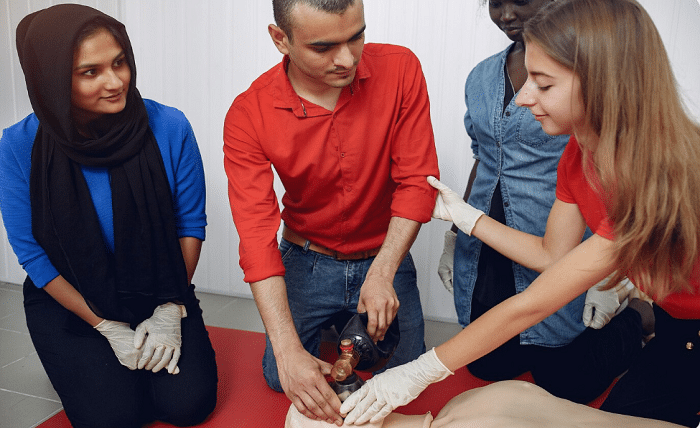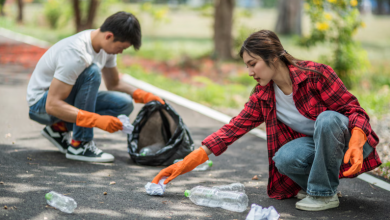
In a life-threatening emergency, every second counts. Whether it’s a medical crisis, a natural disaster, or a violent encounter, being able to recognize the danger and respond quickly can mean the difference between life and death. While no one ever wants to be in such a situation, preparedness can empower you to act decisively when it matters most. Here’s how to recognize and react to deadly emergencies before it’s too late.
Recognizing the Signs of an Emergency
Emergencies don’t always come with flashing signs or loud alarms. Sometimes, they’re subtle and easy to miss unless you know what to look for. Here are common categories of emergencies and key warning signs:
1. Medical Emergencies
Medical crises like heart attacks, strokes, or severe allergic reactions can escalate rapidly.
- Heart Attack: Chest pain or pressure, shortness of breath, pain in the arm, neck, or jaw, and sudden fatigue or dizziness.
- Stroke: Sudden numbness or weakness (especially on one side), confusion, difficulty speaking, and loss of balance.
- Anaphylaxis (Severe Allergic Reaction): Swelling of the face or throat, difficulty breathing, rapid pulse, or fainting.
2. Environmental Disasters
Natural events can become life-threatening in seconds.
- Earthquakes: Strong shaking, falling objects, and structural damage.
- Fires: Smell of smoke, visible flames, or alarms going off. Rapidly worsening air quality indoors is also a red flag.
- Flooding: Fast-rising water levels, overflowing drains, or local warnings about flash floods.
3. Violent Situations
These include active shooter incidents, home invasions, or assaults.
- Warning signs: Screaming, loud bangs, panic among crowds, or suspicious behavior.
- Situational awareness: Trust your instincts. If something feels “off,” take it seriously.
How to React When Every Second Counts
Once you recognize that an emergency is occurring, it’s vital to act quickly and appropriately. Panic delays action—so having a basic plan and training helps tremendously.
1. Stay Calm and Assess the Situation
Take a deep breath and scan your surroundings. Determine:
- Is it safe to help?
- What’s the most immediate threat?
- Are others around who can assist or call for help?
Remaining as calm as possible improves your ability to make smart, potentially life-saving decisions.
2. Call for Help
For medical or safety emergencies, call 911 (or your country’s emergency number) immediately. Be ready to:
- State your name and location.
- Describe what’s happening.
- Provide any known details about the victim or the danger.
Additionally, if the situation requires, request medical flight transport to ensure the quickest possible care and transport to a hospital.
Never assume someone else has already called. Taking the initiative can save a life.
3. Take Immediate Action
If you’ve received training, act within your capabilities. Some examples:
- CPR or AED Use: For someone not breathing or without a pulse.
- Epinephrine Injector: For someone in anaphylaxis, if they have an EpiPen.
- Stop the Bleed: Apply pressure to bleeding wounds with whatever is available.
- Fire: Evacuate the area and help others out if it’s safe. Use an extinguisher if the fire is small and manageable.
- Earthquake: Drop, cover, and hold on until the shaking stops.
- Active Shooter: Follow “Run, Hide, Fight” protocol—run if safe, hide silently if not, and fight as a last resort.
4. Don’t Make It Worse
While your instincts may urge you to intervene, acting without understanding the risks can endanger yourself and others. If you’re not trained or the situation is unsafe, focus on alerting authorities and guiding others to safety.
Preparation Is Key
Emergencies are unpredictable—but your reaction doesn’t have to be. A little preparation goes a long way.
1. Take First Aid and CPR Training
Programs from the Red Cross or other organizations offer basic life-saving skills that can be invaluable in an emergency.
2. Keep Emergency Supplies on Hand
Whether at home, in your car, or at work, an emergency kit should include:
- First-aid supplies
- Flashlight and batteries
- Bottled water and non-perishable food
- Blanket
- Copies of important documents
- Phone charger or power bank
3. Know Your Surroundings
Always be aware of exits, emergency contacts, and local resources. When visiting new places, take a few seconds to identify escape routes and emergency information.
Final Thoughts
Deadly emergencies are often sudden and shocking, but the best defense is a calm mind paired with preparation. Recognizing the early signs of danger and knowing how to react can not only save your life but also help you protect others. Take the time today to prepare—because when disaster strikes, you might not get a second chance.




